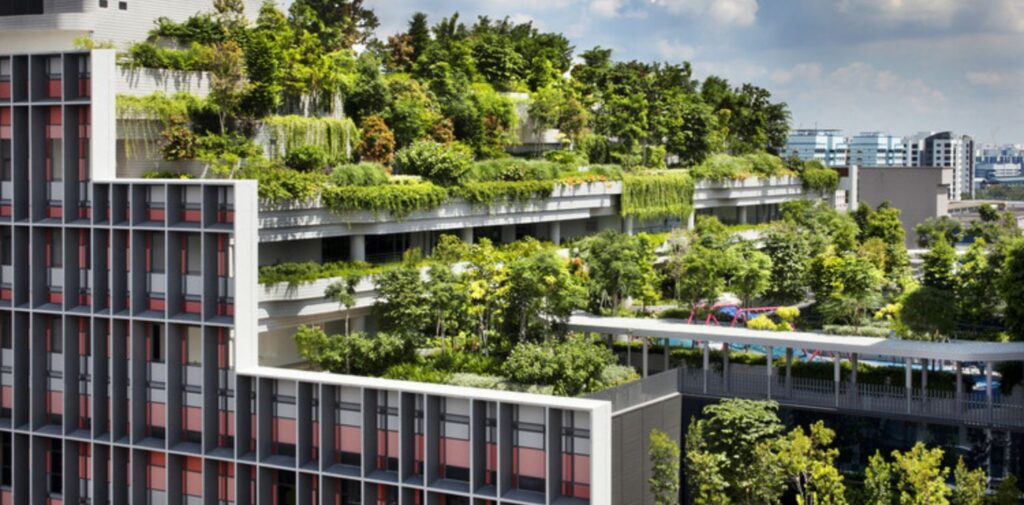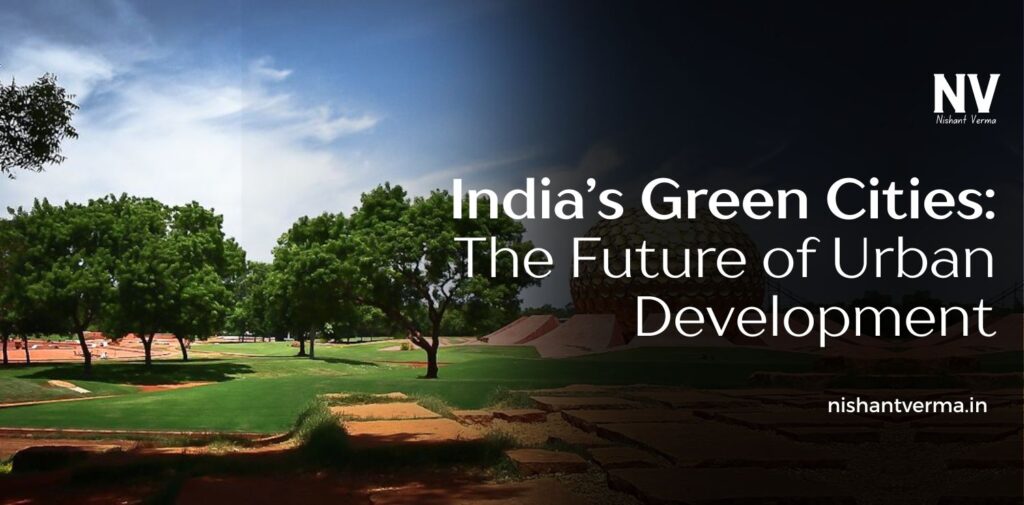In recent years, India has witnessed a growing shift towards creating sustainable and eco-friendly urban spaces. Green cities, which prioritize environmental conservation and sustainable living, are not just a global trend but a necessity for a country like India, where urbanization is rapidly increasing. These cities aim to blend development with nature, offering a balanced and healthy living environment. As urban areas continue to expand, India green cities are reshaping how we think about urban development, providing hope for a cleaner, greener, and more sustainable future.
The Need for Green Cities in India
India is one of the world’s most populous countries, and over the years, the rapid increase in population has resulted in fast-growing cities. However, this urban growth has often come at the cost of the environment, with air pollution, water scarcity, and deforestation becoming serious concerns. As a result, there is a pressing need to rethink how cities are designed and developed. Green cities focus on minimizing the negative impact on the environment while providing high-quality living spaces for residents.
India’s environmental challenges are enormous. With air pollution levels in many cities exceeding international safety standards, waste management issues, and the growing effects of climate change, it is clear that traditional urban development methods need a rework. Green cities offer a promising solution by emphasizing sustainability, energy efficiency, and environmental protection at every stage of urban planning.

Sustainable Architecture and Urban Planning
One of the key components of green cities is sustainable architecture and urban planning. Traditional buildings in urban areas consume a lot of energy for cooling and heating, contributing to higher carbon emissions. In contrast, green buildings are designed to be energy-efficient. They use renewable energy sources, such as solar power, and incorporate technologies like rainwater harvesting, energy-efficient lighting, and insulation materials that reduce the need for heating or cooling.
India has seen the rise of many green buildings in recent years, some of which have earned prestigious certifications like LEED (Leadership in Energy and Environmental Design). Cities like Bengaluru, New Delhi, and Pune are leading the way with eco-friendly buildings that reduce the environmental footprint. These buildings not only provide a healthier living space but also help in reducing energy bills and maintaining a cleaner environment.
Urban planning in green cities is also centered around mixed-use development, where residential, commercial, and recreational spaces are designed to be in close proximity. This approach reduces the need for long commutes, thus decreasing traffic congestion and pollution. By integrating green spaces, such as parks, gardens, and open areas, urban planners ensure that people can enjoy nature in the midst of the city, promoting physical and mental well-being.

Green Transportation: A Key Element
Transportation is another critical factor in creating green cities. With the rapid increase in the number of vehicles, traffic congestion and pollution have become major challenges in most Indian cities. Green cities promote the use of eco-friendly transportation options, such as electric vehicles (EVs), public transport, and cycling.
Many cities are now focusing on building efficient public transport systems, such as metro rails and bus rapid transit (BRT) corridors. These systems provide a sustainable alternative to private vehicles, reducing both traffic congestion and pollution. For instance, Delhi’s metro system has been a significant step in reducing road traffic and lowering carbon emissions. The introduction of electric buses and the promotion of electric cars are other steps being taken by Indian cities to reduce their reliance on fossil fuels.
Cycling lanes are also becoming more common in urban areas, offering a low-carbon transportation option. Cities like Chennai and Ahmedabad are increasingly incorporating dedicated cycling lanes in their infrastructure plans. These initiatives make green cities more walkable and bike-friendly, reducing the need for cars and encouraging healthier lifestyles.
Waste Management and Recycling Initiatives
Effective waste management is one of the pillars of green cities. With rapid urbanization, the amount of waste generated in cities is increasing, and improper disposal of waste can have serious environmental consequences. Green cities focus on efficient waste management systems that encourage recycling, composting, and waste-to-energy technologies.
India’s urban areas are now embracing the concept of zero-waste cities, where waste is minimized and resources are reused. Cities like Indore and Surat have been recognized for their effective waste management practices. These cities have implemented door-to-door waste collection systems, segregating waste into biodegradable and non-biodegradable categories. Recycling programs have been introduced to turn waste into usable resources, reducing the burden on landfills and preventing pollution.
Additionally, many cities are adopting composting initiatives to manage organic waste. Community composting programs encourage citizens to compost their kitchen waste, turning it into valuable fertilizer for urban gardens and parks. The concept of waste-to-energy plants is also gaining momentum, where non-recyclable waste is converted into electricity, providing a sustainable energy source for the city.
Promoting Green Spaces and Urban Agriculture
Green spaces such as parks, gardens, and community forests are vital for maintaining the ecological balance in urban environments. These spaces provide fresh air, reduce the urban heat island effect, and offer a place for relaxation and recreation. In green cities, urban planners prioritize the creation and maintenance of green spaces, ensuring that residents have access to nature even in the heart of the city.
In addition to parks and gardens, urban agriculture is also becoming an essential part of green cities in India. With the increasing awareness of healthy eating and the benefits of locally grown produce, many cities are encouraging urban farming. Rooftop gardens, community gardens, and vertical farming projects are being promoted to reduce the dependence on externally sourced food. This not only reduces the carbon footprint associated with transporting food but also allows city dwellers to grow their own vegetables and herbs, improving food security.
The city of Mumbai, for example, has seen the rise of rooftop gardens on residential buildings, where citizens are growing vegetables and fruits. This movement is slowly spreading to other parts of India, contributing to more sustainable and self-reliant cities.

Water Conservation and Management
Water scarcity is one of the biggest challenges faced by Indian cities, especially with the growing population and changing climate patterns. Green cities focus on sustainable water management practices to ensure that water resources are used efficiently and conserved for future generations. Rainwater harvesting is a popular method being adopted by cities to collect and store rainwater for reuse in homes, parks, and public spaces.
Cities like Chennai and Bengaluru have implemented rainwater harvesting systems on a large scale. These systems help recharge groundwater levels, reducing the dependency on external water sources. Additionally, wastewater treatment plants are being set up to recycle and reuse water, reducing the pressure on fresh water supplies.
Public awareness campaigns about water conservation, the use of water-efficient appliances, and the promotion of water-saving practices are also essential aspects of building green cities. In many cities, water metering and pricing policies are being implemented to encourage responsible water use.
Conclusion: India Green Cities
The rise of green cities in India represents a shift towards more sustainable and environmentally friendly urban development. As the population grows and cities expand, it becomes increasingly important to adopt practices that protect the environment while improving the quality of life for residents. From sustainable architecture and green transportation to efficient waste management and water conservation, India green cities are leading the way in creating a healthier and more sustainable future for all.
While the journey toward fully green cities is still in progress, the initiatives taken by various Indian cities are promising. These efforts not only contribute to environmental sustainability but also improve the overall well-being of urban dwellers. With continued investment in green technologies, eco-friendly infrastructure, and public awareness, India green cities will play a crucial role in reshaping the future of urban development, making cities more livable and sustainable for generations to come.




